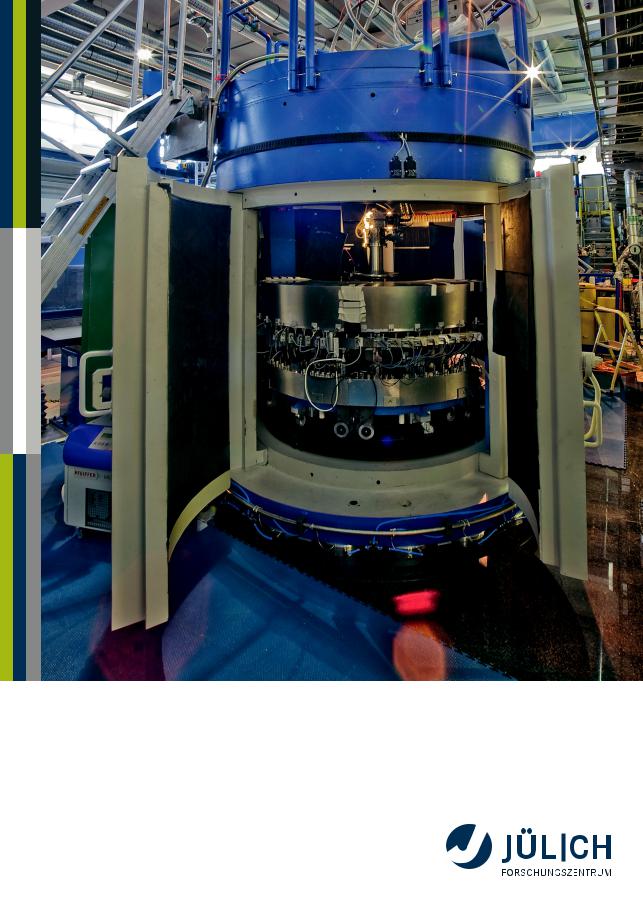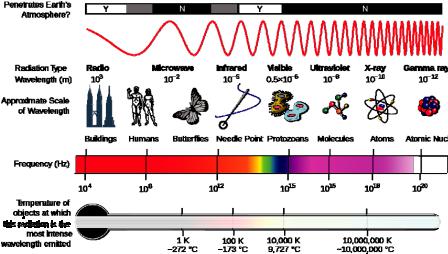
Schluesseltech_39 (1)
.pdf
 Member of the Helmholtz Association
Member of the Helmholtz Association
Laboratory Course |
RWTH Aachen |
Neutron Scattering |
University Münster |
|
|
Lectures |
|
Thomas Brückel, Gernot Heger, Dieter Richter,
Georg Roth and Reiner Zorn (Editors)

Schriften des Forschungszentrums Jülich |
|
Reihe Schlüsseltechnologien / Key Technologies |
Band / Volume 39 |
Forschungszentrum Jülich GmbH
Jülich Centre For Neutron Science (JCNS)
Thomas Brückel, Gernot Heger, Dieter Richter,
Georg Roth and Reiner Zorn (Editors)
Neutron Scattering
Lectures of the JCNS Laborator Course held at Forschungszentrum Jülich and the research reactor FRM II of TU Munich
In cooperation with
RWTH Aachen and University of Münster
Schriften des Forschungszentrums Jülich |
|
Reihe Schlüsseltechnologien / Key Technologies |
Band / Volume 39 |
|
|
ISSN 1866-1807 |
ISBN 978-3-89336-789-4 |
Bibliographic information published by the Deutsche Nationalbibliothek.
The Deutsche Nationalbibliothek lists this publication in the Deutsche
Nationalbibliografie; detailed bibliographic data are available in the
Internet at http://dnb.d-nb.de.
Publisher and |
Forschungszentrum Jülich GmbH |
Distributor: |
Zentralbibliothek |
|
52425 Jülich |
|
Phone +49 (0) 24 61 61-53 68 · Fax +49 (0) 24 61 61-61 03 |
|
e-mail: zb-publikation@fz-juelich.de |
|
Internet: http://www.fz-juelich.de/zb |
Cover Design: |
Grafische Medien, Forschungszentrum Jülich GmbH |
Printer: |
Grafische Medien, Forschungszentrum Jülich GmbH |
Copyright: |
Forschungszentrum Jülich 2012 |
Schriften des Forschungszentrums Jülich
Reihe Schlüsseltechnologien / Key Technologies Band / Volume 39
ISSN 1866-1807
ISBN 978-3-89336-789-4
The complete volume ist freely available on the Internet on the Jülicher Open Access Server (JUWEL) at http://www.fz-juelich.de/zb/juwel
Neither this book nor any part of it may be reproduced or transmitted in any form or by any means, electronic or mechanical, including photocopying, microfilming, and recording, or by any information storage and retrieval system, without permission in writing from the publisher.
Contents
1 |
Introduction: Neutron Scattering in Contemporary |
Th. Brückel |
|
Research |
|
2 |
Neutron Sources |
J. Voigt |
3 |
Symmetry of Crystals |
G. Heger |
4 |
Diffraction |
G. Roth |
5 |
Nanostructures Investigated by Small Angle Neutron |
H. Frielinghaus |
|
Scattering |
|
6 |
Macromolecules (structure) |
J. Stellbrink |
7 |
Spin Dependent and Magnetic Scattering |
R. P. Hermann |
8 |
Structural Analysis |
G. Roth |
9 |
Neutron Reflectometry |
E. Kentzinger |
10 |
Magnetic Nanostructures |
U. Rücker |
11 |
Inelastic Scattering |
R. Zorn |
12 |
Strongly Correlated Electrons |
M. Angst |
13 |
Dynamics of Macromolecules |
D. Richter |
14 |
Applications of Neutron Scattering - an Overview |
Th. Brückel |
1Introduction: Neutron Scattering in Contemporary Research
Th. Brückel
Jülich Centre for Neutron Science & Peter Grünberg Institute
Research Center Jülich
Contents |
|
|
1.1 |
Introduction: Why scattering? ........................................................ |
2 |
1.2 |
X-Ray Scattering in Condensed Matter Research......................... |
3 |
1.3 |
Impact of Scattering in other Fields of Science.............................. |
6 |
1.4 |
Why Neutrons?.................................................................................. |
7 |
1.5 |
The Social Practice of Neutron Scattering.................................... |
11 |
Exercises ..................................................................................................... |
13 |
|
1.2 |
Th. Brückel |
1.1 Introduction: Why scattering?
In this chapter, we will start with a very gentle qualitative introduction entirely without formula to give you an idea what the course is all about. The details will follow in subsequent chapters.
Imagine you leave this lecture hall, some mean looking guys dressed entirely in black follow, kidnap and take you to the medieval castle of Nideggen in the close-by Eifel mountains. There you are being thrown into a pitch dark dungeon. You cannot see anything, but you hear some noises. Are there rats? Are there other prisoners? Are there dragons? Luckily you remember that you have some matches in your pocket. You light a match, you can see everything around you and everything becomes clear to you…
What I have just described is essentially like a scattering experiment: figuratively it sheds light into darkness and helps us understand the world around us. Let’s analyse what you did in the dungeon: first when you light the match, you start a source of radiation. Here the radiation is light. This light then gets scattered (reflected, transmitted) from the surrounding objects. In a scientific scattering experiment, we will call this object a “sample”. Back to the dungeon: some of this radiation gets scattered into your eye. Your eye serves as very special radiation detector: with its lens, it is able to even make an image of the objects on the retina, which in the language of a physicist would be called an “area position sensitive pixel detector”. This image contains lots of information: the colour of the backscattered light tells you something about the absorption of certain components of the light and therefore gives information about the material the light is scattered from. The position of the signal on the retina gives you information about the spatial arrangement of the objects around you. And finally the time dependence of the signal tells you that the monster is actually crawling towards you, ready to attack. All this information has to be treated and interpreted. This is done by our brain, an extremely powerful computer to analyse this wealth of data.
This little example shows you the importance of scattering for our understanding of the world: nearly all information that we as individuals have about the world in which we live comes from light scattering and imaging through our eyes. It is only natural that scientists mimic this process of obtaining information in well controlled scattering experiments: they build a source of radiation, direct a beam of radiation towards a sample, detect the radiation scattered from a sample, i. e. convert the signal into an electronic signal, which they can then treat by means of computers. In most cases one wants an undisturbed image of the object under investigation and therefore chooses the radiation, so that it does not influence or modify the sample. Scattering is therefore a non-destructive and very gentle method, if the appropriate type of radiation is chosen for the experiment.

Introduction |
1.3 |
1.2 X-Ray Scattering in Condensed Matter Research
What other requirements must the radiation fulfill to be useful for scattering experiments? In condensed matter science we want to go beyond our daily experience and understand the microscopic atomic structure of matter, i. e. we want to find out where the atoms are located inside our samples and also how they move. This cannot be done by light scattering. Why? Well in general light is scattered from the surface and does not penetrate enough into many materials, such as metals, for example. On the other hand, if it penetrates like in the case of glass it is normally just being transmitted except if we have a very bad glass with lots of inhomogeneities, but the main reason is actually that light has too long of the wavelength, see figure 1.1.
Fig. 1: Electromagnetic spectrum; shown is the wavelength and frequency of electromagnetic waves, which have different names for different wavelength regions. Also given are examples for objects with sizes comparable to the wavelength. (from WIKIPEDIA)
It is quite intuitive to understand that if we want to measure the distance between the atoms, we need a “ruler” of comparable lengths. Now the distance between atoms is in the order of 0.1 nm = 10-10 m = 0.0000000001 m. Since the distance between atoms is such an important length scale in condensed matter science, it has been given its own unit: 0.1 nm = 1 Ångstrøm = 1 Å. If we compare the wavelength of light with this characteristic length scale, it is 4000 to 7000 times longer and therefore not appropriate to measure distances on an atomic lengthscale. In the electromagnetic spectrum, x-rays have a well adapted wavelength of about
